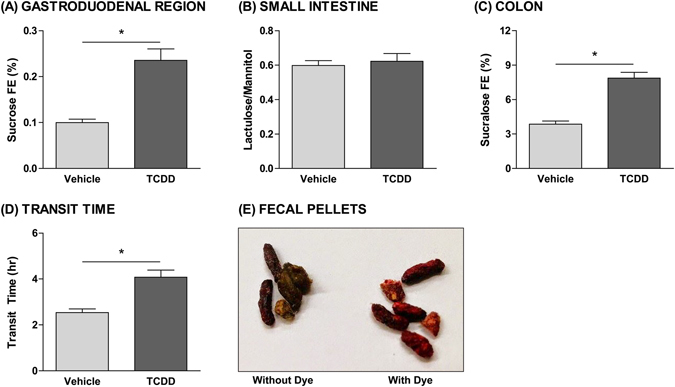Figure 7.

Effects of TCDD on intestinal permeability and motility. Para-cellular permeability of the (A) gastroduodenal region, (B) small intestine, and (C) colon in male C57BL/6 mice orally gavaged with sesame oil vehicle or 30 µg/kg TCDD every 4 days. At 26 days after the initial dose, mice were orally gavaged with sucrose, lactulose, mannitol, and sucralose to assess segment-specific intestinal permeability. Urine was collected over a 5-hour period, and fractional excretion (FE) of the probes was measured using ultra high performance liquid chromatography (UPLC) tandem mass spectrometry (MS/MS). (D) Whole gut transit time of male C57BL/6 mice orally gavaged with sesame oil vehicle or 30 µg/kg TCDD every 4 days. At 27 days after the initial dose, transit time was monitored by orally gavaging mice with Carmine Red and then measuring the interval between the gavage and the first observance of dye in the fecal pellets. (E) Fecal pellets collected from mice following oral gavage with Carmine Red dye (right) compared to pellets lacking the dye (left). Bars represent the average ± standard error of the mean for at least 6 biological replicates. Statistical significance (*p ≤ 0.05) was determined using a Student’s t-test performed in SAS 9.3.
